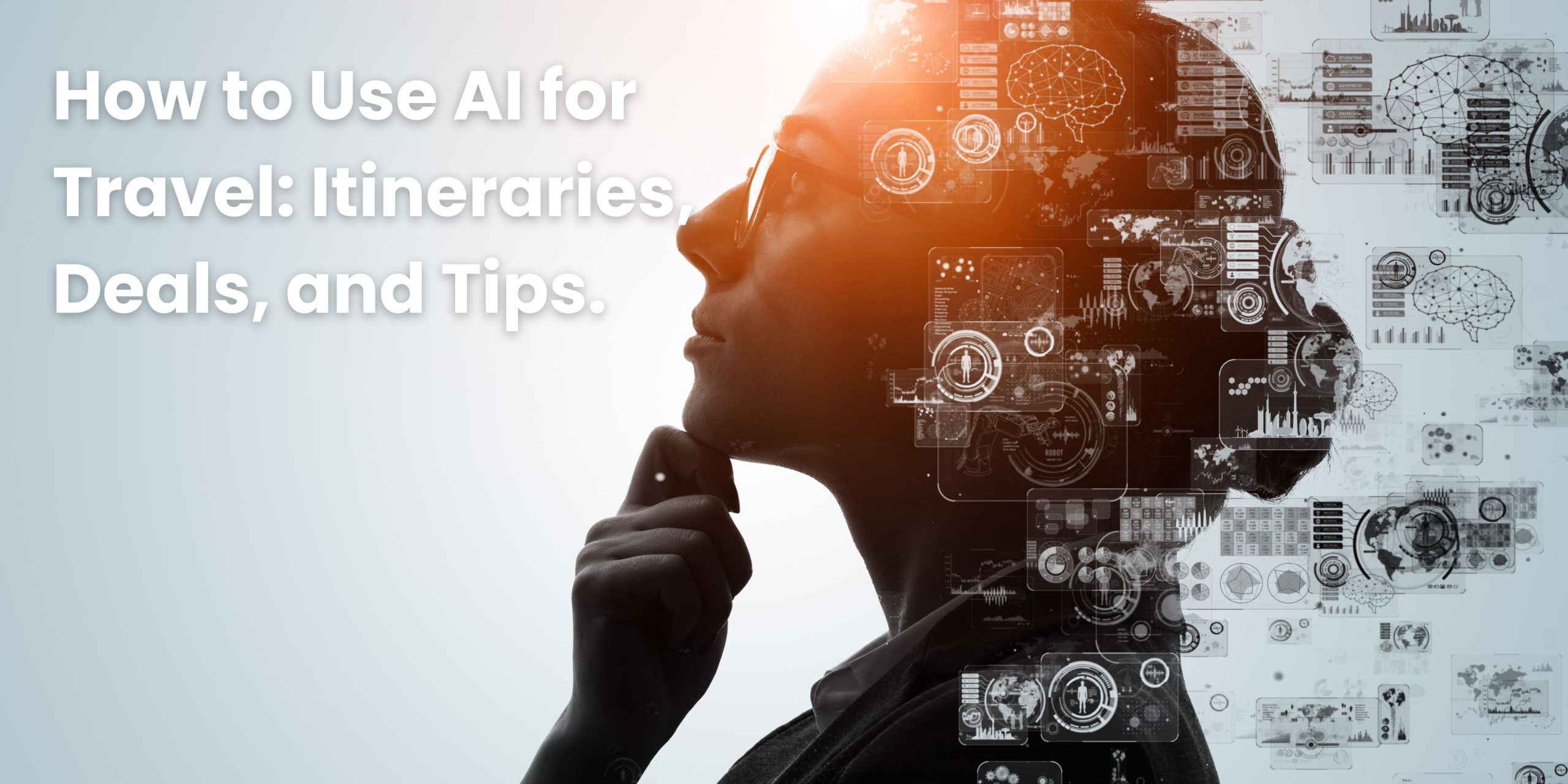AI can be used in travel to plan smarter itineraries, automate bookings, get real-time assistance, and personalize every stage of a trip from discovery to on-the-go optimization, all while keeping human judgment for final decisions. The most effective approach is a hybrid: use AI for speed and scale, and lean on human choices for nuance and verification.
Why use AI for travel
AI compresses hours of research into minutes by parsing preferences, surfacing relevant options, and even taking actions like holding seats or suggesting date shifts that reduce costs and stress. In 2025, tools increasingly connect planning, booking, and rebooking in one flow, with agentic systems moving from recommendations to task completion.
Core use cases
- Trip discovery and ideation: Ask broad prompts, then narrow by interests (food, outdoors, art) to get curated options and sample itineraries in seconds. Consumer testers found AI consistently useful for brainstorming and clustering days by location to reduce transit time.
- Personalized itineraries: Modern systems adapt to traveler personas (pace, budget, style) and adjust plans dynamically as preferences become clearer across the journey.
- Booking and changes: Conversational assistants can guide or automate flights, stays, cars, and rebooking during disruptions, reducing wait times and improving recovery.
- Operations and timing: AI predicts pricing windows, demand, and disruption risk, helping decide when to buy, when to hold, and how to route efficiently.
Best AI tools to try
- Navoy (best overall): An AI-native travel agent that plans and books end-to-end—smart flights, stays, and activities—in under a minute, with editable itineraries, maps, time estimates, and PDF export; ideal for a seamless, one-stop workflow.
- TripIt guide to getting started: Practical walkthrough on training AI with preferences, writing detailed prompts, and avoiding pitfalls like sold-out attractions by asking about ticket lead times.
- AFAR’s tested apps: Hands-on impressions of AI travel tools such as Kayak via AI chat and Google’s itinerary features, with clear notes on booking flow trade-offs.
- TripAdvisor Trip Builder: Uses a massive review base to assemble day-by-day plans with intuitive controls rather than long-form prompts.
- Trip Planner AI: A free web app that generates editable, optimized itineraries with lodging, routing, and local food suggestions.
Step-by-step: plan a trip with AI
- Define goals: Dates or season, budget bands, pace per day, must-do themes, and accessibility or dietary needs to steer recommendations precisely.
- Train the tool: State home airports, seat preferences, hotel style (boutique vs chain), transit comfort, and crowd tolerance so results match real habits.
- Prompt specifically: Ask for clustered days, travel times between stops, ticket lead times, and weather-aware plans; request alternatives if primary items sell out.
- Validate links and availability: Ask for booking links and date-specific availability; testers noted some tools hide links unless requested.
- Optimize the route: Have AI group attractions geographically and minimize backtracking; several users reported time savings from location-based day plans.
- Export and edit: Copy chats or use built-in planners to save itineraries, then fine-tune timing and reservations.
On-the-go assistance
- Real-time re-planning: During delays or closures, AI can reshuffle days, rebook, and notify hotels or rentals as data-sharing increases across providers.
- Packing and weather: Generate packing lists from forecast and activities, with optional shopping links to fill gaps before departure.
- Proactive nudges: Assistants can remind about passport expirations, crowded dates, or cheaper fare windows aligned to stated preferences.
Tips for better results
- Be verbose up front: More constraints yield fewer, better options and less back-and-forth later.
- Ask for constraints: Always request ticket lead times, time windows, and must-book-in-advance items to avoid sold-out surprises.
- Compare sources: Cross-check pricing and availability via links or a second tool to reduce hallucinations and ensure bookability.
- Keep human oversight: Use AI for options and structure, then confirm critical facts and bookings directly.
Industry shift to watch
Search and booking are converging: new AI modes in mainstream platforms blend natural-language planning, deep personalization, and agentic booking inside the search experience, potentially flattening traditional link-heavy funnels. Expect faster, more unified trip flows that feel like chatting with a capable assistant.
Ethical and privacy notes
Hyper-personalization relies on data sharing across airlines, hotels, and mobility; brands will weigh seamless experiences against privacy risks and consent requirements. Travelers get better recovery and coordination when delays happen, but should review what data is shared and why.
Quick start prompts
- “Plan a 4-day foodie trip to Lisbon in October, mid-range budget, prefer walkable neighborhoods and markets, avoid rental cars, cluster days by area, include ticketed items with lead time.”
- “Build a day-by-day Tokyo itinerary for two with a toddler, nap-friendly schedule, stroller-accessible transit, and bad-weather alternates; include booking links where available.”
Bottom line
Using AI in travel means faster discovery, personalized itineraries, smoother bookings, and resilient re-planning when things change, provided results are verified and tuned with clear preferences. The winning play is a human-in-the-loop workflow that pairs AI’s speed with intentional choices.





